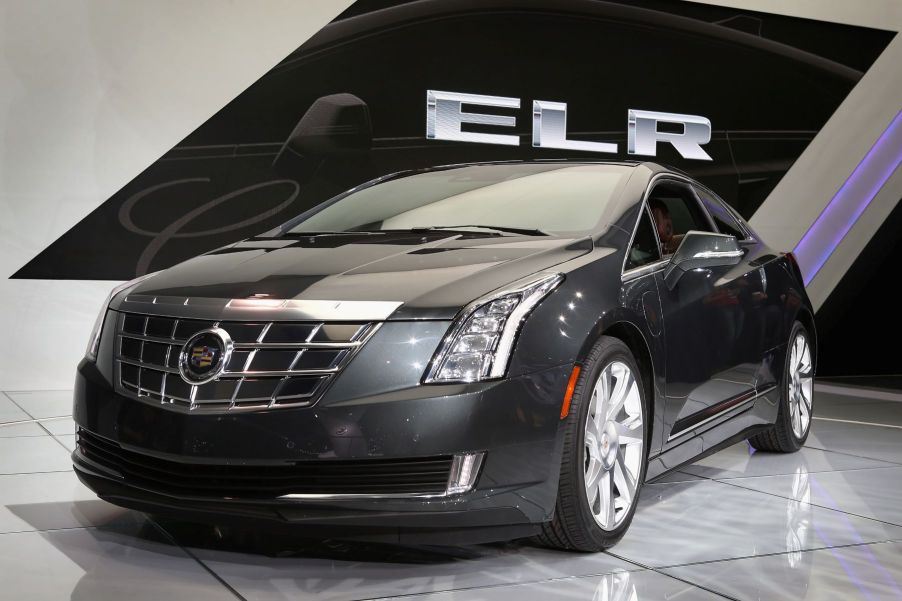
6 Car Models That Shouldn’t Have Left the Drawing Board
Tens of millions of cars are sold every year in the U.S. Dozens of segments offer drivers all kinds of car models to choose from. Some stand out for styling, power, efficiency, reliability, luxury, or safety. However, over time in the auto industry, some car models have stood out for their issues and left consumers wondering why these flawed vehicles hit production in the first place. Here are six car models that shouldn’t have been built, according to Motor Junkie.
Cadillac ELR

The ELR was Cadillac’s first attempt at breaking into the luxury electric vehicle (EV) segment. It debuted for the 2014 model year as an upscale plug-in hybrid (PHEV) competitor to the Chevrolet Volt. It ended up being the worst Cadillac car model you should never buy.
The ELR had a similar powertrain to the Volt. An electric motor generated 157 horsepower and 295 lb-ft of torque. When the charge ran out, a 1.4-liter four-cylinder gas engine making 84 horsepower came on to power the electric motor. A full recharge of the battery takes four to five hours using a 240-volt power source.
Motor Junkie and Edmunds reviewers agree that the ELR is a good-looking car model. However, a starting price of around $75,000 made it more expensive than many luxury PHEVs and EVs on the market. The ELR’s debut came the same year as the Tesla Model S. The ELR went on hiatus for 2015 and returned in 2016 before being discontinued.
Pontiac Aztek
Motor Junkie says the Pontiac Aztek was a good idea on paper. A crossover with lots of interior space and a good lineup of engines was a little ahead of its time. However, then it left the paper and went to production and became one of the most hated car models ever.
The Aztek is ugly. Ugly from the outside or the inside. Despite some good features like available all-wheel drive, a heads-up display, and a portable cooler, the lousy finish and interior quality add to the ugly looks. It got a small bump in popularity from Walter White’s Aztek in the television show Breaking Bad but ultimately ended after the 2005 model year.
Chevrolet Corvair
When it debuted in 1960, the Chevrolet Corvair was a rear-engine, air-cooled, flat six-cylinder compact car model. It was inexpensive and quick for consumers at the time.
However, consumer advocate Ralph Nader pointed out a significant problem with the Corvair in his book Unsafe at Any Speed. It detailed documents that showed Chevrolet knew the Corvair was responsible for many fatal accidents. Its rear-engine design made it tough to handle, but the company did not put any additional stabilizer bars or suspension modifications to compensate. This meant the Corvair could flip during cornering. Chevrolet ended up paying a settlement for the car model, and Corvair sales dropped dramatically before being discontinued in 1969.
Ford Pinto
Ford debuted the Pinto in 1971 with two-door sedan, two-door station wagon, and three-door hatchback options. It was meant to address the rising popularity of compact cars. The Pinto was an economical car model: four- and six-cylinder engines were available, it wasn’t expensive and was nice to look at.
However, there was a major flaw in the design. Ford did not put any protection around the fuel tank below the trunk, something most car models have. The Pinto became iconic for fiery crashes in even minor accidents. This was a problem Ford knew needed fixing and would have cost $12 per car. As many as 900 people died due to the fuel tank problem. Ford ended up paying hundreds of millions of dollars in lawsuits as a result of this car model.
Fiat 500L
The Fiat 500 marked the carmaker’s return to North America for the 2012 model year. It was a hit, with nearly 100,000 car models sold in its first three years. Fiat went with an extended platform version in the 500L, a compact minivan.
The 500L car model had a longer wheelbase and more interior space. However, the 500L was unattractive, impractical, slow, and expensive. The starting price was steep at more than $20,000 for its slight size and capabilities. The 500L was discontinued in North America following the 2020 model year. The final 500L model available in the U.S. was ranked one of the worst wagons of 2020.
Suzuki X-90
The Suzuki X-90 has to be one of the weirdest car model designs to emerge from the 1990s. It was a two-seater that was two feet shorter than a Honda Civic but branded as a two-door SUV with a removable T-top.
It had a part-time all-wheel drive system that helped it perform well off-road. Still, the 6 inches of ground clearance meant it wasn’t made for long trips over trails. The 1.6-liter four-cylinder engine produced 95 horsepower and 98 lb-ft of torque. It worked well for such a small car, but sales numbers were terrible, and the X-90 was discontinued after the 1997 model year. MotorTrend named it the worst car of the 1990s.
Which model was the worst of all?
Many car models on this list have their flaws. However, few in any list can compare to the Ford Pinto’s problems. The faulty design that could’ve easily been fixed led to a well-deserved dangerous reputation and hundreds of deaths. The $120 million Ford ended up paying by 1981 for the Pinto’s flaws (equal to more than $391 million in 2022) is one of the biggest settlements in automotive history.


